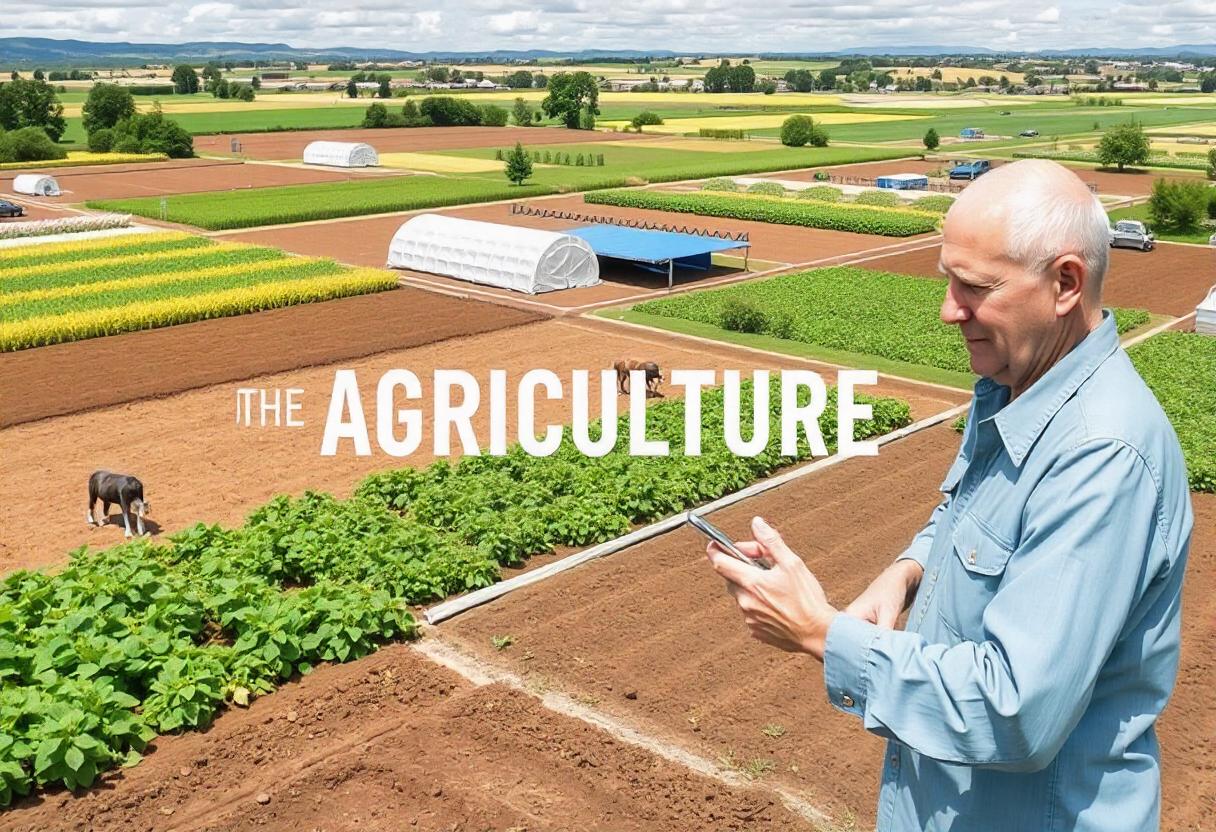
The future of agriculture is undergoing a significant transformation, driven by a combination of technological advancements, climate change, population growth, and evolving consumer preferences. With the global population projected to reach 9.7 billion by 2050, the pressure on agricultural systems to produce more food with fewer resources is greater than ever. To meet this demand, innovations in technology, sustainable practices, and agricultural policy will play pivotal roles.
Precision Agriculture
One of the most exciting advancements shaping the future of agriculture is precision farming. By utilizing data analytics, satellite imagery, drones, and sensors, farmers can monitor soil conditions, crop health, and moisture levels with incredible accuracy. This approach allows for precise application of water, fertilizers, and pesticides, reducing waste and environmental impact while boosting crop yields. With automation and AI becoming more integrated into farming, tasks such as planting, harvesting, and monitoring crops can be streamlined, saving labor costs and improving efficiency.
Vertical Farming
As urban populations continue to rise, there is an increasing need to produce food in urban environments. Vertical farming, which involves growing crops in stacked layers within controlled environments, is emerging as a solution to this challenge. By using LED lighting and hydroponic systems, vertical farms can grow produce year-round with minimal water and no pesticides. Moreover, they can be established in cities, reducing transportation costs and emissions associated with traditional farming methods.
Climate-Resilient Crops
With the increasing impact of climate change, developing crops that can withstand extreme weather conditions is crucial. Scientists are working to create climate-resilient crops that are drought-tolerant, heat-resistant, and more adaptable to changing environmental conditions. Advances in genetic engineering and biotechnology are allowing researchers to enhance the nutritional value and shelf life of crops, helping to ensure food security in a warming world.
Regenerative Agriculture
In contrast to conventional farming, which often depletes soil quality, regenerative agriculture focuses on rebuilding soil health, increasing biodiversity, and improving ecosystems. This holistic approach to farming emphasizes practices such as cover cropping, crop rotation, and reduced tillage to enhance soil carbon sequestration and improve water retention. By promoting healthier soil, regenerative agriculture can increase productivity, reduce reliance on chemical inputs, and create more resilient farming systems.
Agri-Tech and AI
Artificial intelligence is making waves in agriculture, offering predictive analytics that help farmers make data-driven decisions. Machine learning algorithms can analyze weather patterns, soil health, and crop performance to suggest optimal planting and harvesting times. Robots and autonomous machinery are also set to revolutionize agriculture, performing labor-intensive tasks with precision and efficiency. In the future, farms could be operated entirely by AI-driven systems, minimizing the need for human labor and maximizing productivity.
Sustainable Aquaculture
Aquaculture, or fish farming, is increasingly seen as a vital component of global food security. However, traditional aquaculture practices have raised environmental concerns such as overfishing and water pollution. Sustainable aquaculture practices aim to address these challenges by creating closed-loop systems that recycle water, use renewable energy, and reduce the use of antibiotics. Innovations in aquaponics, which combine fish farming with plant cultivation in a symbiotic environment, are also gaining popularity as a sustainable food production method.
Blockchain for Transparency
As consumers demand more transparency in the food supply chain, blockchain technology is being explored to provide a clear record of food production, from farm to table. This technology can track the journey of produce, meat, and other agricultural products through the supply chain, ensuring ethical sourcing, reducing fraud, and minimizing food waste. Blockchain also allows for greater traceability, enabling consumers to make more informed decisions about the food they purchase.
Alternative Proteins
The future of agriculture may also include a shift away from traditional livestock farming toward alternative protein sources. Plant-based meat alternatives, lab-grown meat, and insect farming are gaining attention as more sustainable and environmentally friendly options to meet the growing global demand for protein. These alternatives require fewer resources to produce and generate fewer greenhouse gas emissions than conventional livestock farming, making them appealing options for addressing the environmental challenges of meat production.
Policy and Global Cooperation
Government policies and international cooperation will play an essential role in shaping the future of agriculture. As nations grapple with the effects of climate change, water scarcity, and food security, policies that incentivize sustainable practices, invest in agricultural research, and support smallholder farmers will be crucial. Collaboration between governments, NGOs, and the private sector can help promote sustainable agricultural practices and ensure that the benefits of innovation reach all levels of society, especially in developing regions.
Changing Consumer Preferences
Consumer demand for organic, non-GMO, and locally sourced food is driving changes in agricultural practices. Farmers are increasingly adapting to these preferences by using eco-friendly methods and reducing chemical inputs. Additionally, the rise of plant-based diets is influencing the types of crops grown, with increased interest in legumes, grains, and other plant-based ingredients. By responding to these shifts in consumer behavior, the agricultural industry can better align with the values of modern consumers while promoting sustainable food production.
Agriculture is at a critical crossroads, where technology, sustainability, and policy must converge to ensure a food-secure future for generations to come.